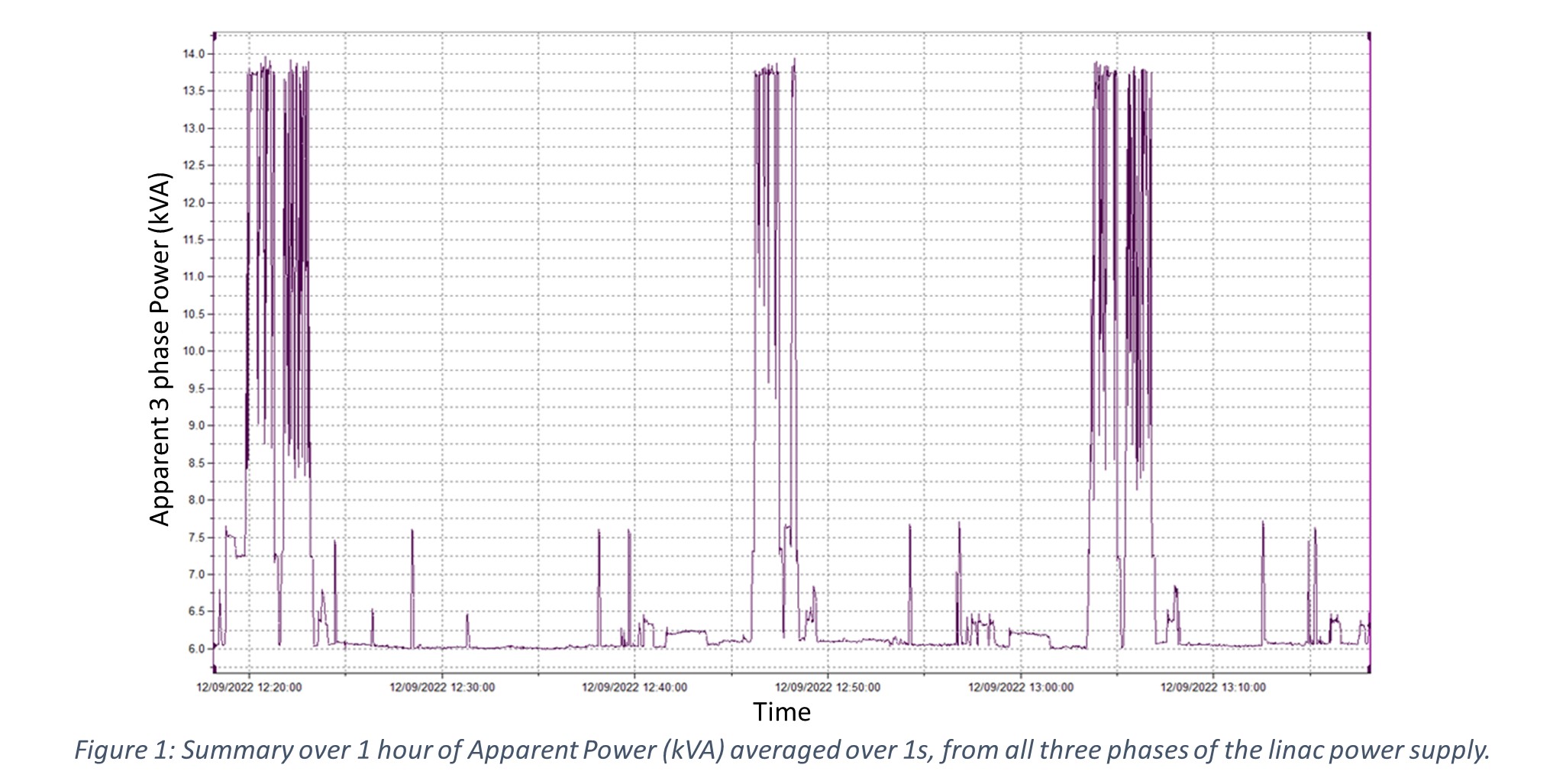Clinical linear accelerator power consumption: Can we reduce financial and environmental cost?
Robert Chuter,
United Kingdom
PO-1077
Abstract
Clinical linear accelerator power consumption: Can we reduce financial and environmental cost?
Authors: Catherine Stanford-Edwards1, Stephen Herbert1, Ryan Lewis1, Robert Chuter2, Mark Edwards1
1Swansea Bay University Health Board, South West Wales Cancer Centre, Swansea, United Kingdom; 2University of Manchester, Manchester Academic Health Sciences Centre, Manchester, United Kingdom
Show Affiliations
Hide Affiliations
Purpose or Objective
Previous studies have shown that climate change is leading to an increase in cancer incidence [1]. Healthcare itself has a large environmental impact, and reductions in the carbon footprint of treatments is required to reduce the risk of harm to current and future patients. Motivated by NHS Wales’s targets for Net Zero carbon emissions by 2030 [2], recent energy price increases, and an assessment of SABR and surgery identifying a need for deeper understanding of linac energy use [3], the power consumption of a linac is being investigated to determine the cost of treatment, financial and environmental. This initial investigation aims to compare power measurements against manufacturer values [4]. Through understanding the current power consumption under different conditions, efficient workflows could be developed to reduce power.
Material and Methods
A Fluke 1738 power monitor has been attached to the three-phase power supply of an Elekta Versa HD linac. The monitor samples at ~10 kHz and collected data over 1 week of clinical use logging the average power consumed every 1 second.
The typical running power under conditions of ‘Standby’, ‘Preparatory’ and ‘Irradiating’ were assessed throughout the week of monitoring. The Mosaiq record and verify system was used to identify 10 prostate patients treated on the machine during this period and the energy consumption estimated for the full course of treatment (60Gy in 20#). Published values were used to convert this into financial cost and carbon footprint.
Results
Variation in power was seen during the day, with clear peaks during irradiation, however there are additional peaks between treatments requiring further investigation (Figure 1)

The average apparent power over 1 second is comparable with the manufacturer quoted values of maximum use (Figure 2).

The typical linac energy consumed for delivering a prostate course of treatment averaged over 10 patients was 19.7kWh (s.d. 2.3). Based on costs of £0.34/kWh [5], and 0.19338kgCO2e/kWh [6] the estimated energy cost of a treatment is ~£6.70 with ~3.81kgCO2e.
Conclusion
The apparent power measured in a clinical setting is comparable to the specifications for installation, with ‘irradiation’ measurements reduced by ~4kVA. Lower values than published are expected, as the site ‘Setting to Work’ documents provide maximum power requirements not typical use. The energy consumption used by the linac for delivering a 20# prostate treatment costs ~£6.70 and ~3.81kgCO2e.
Further work is currently ongoing to improve reliability of results, collecting more samples over a range of machines and including additional treatment sites. The long-term objective is to optimise power consumption in radiotherapy to reduce costs.
References:
[1] Lancet Oncology, 22(10), 2021
[2] Carbon Trust, 2021
[3] Elekta site planning (1008404_02), 2009
[4] Clinical Oncology 34(3), 2022
[5] Ofgem, 2022
[6] Gov.uk, 2022